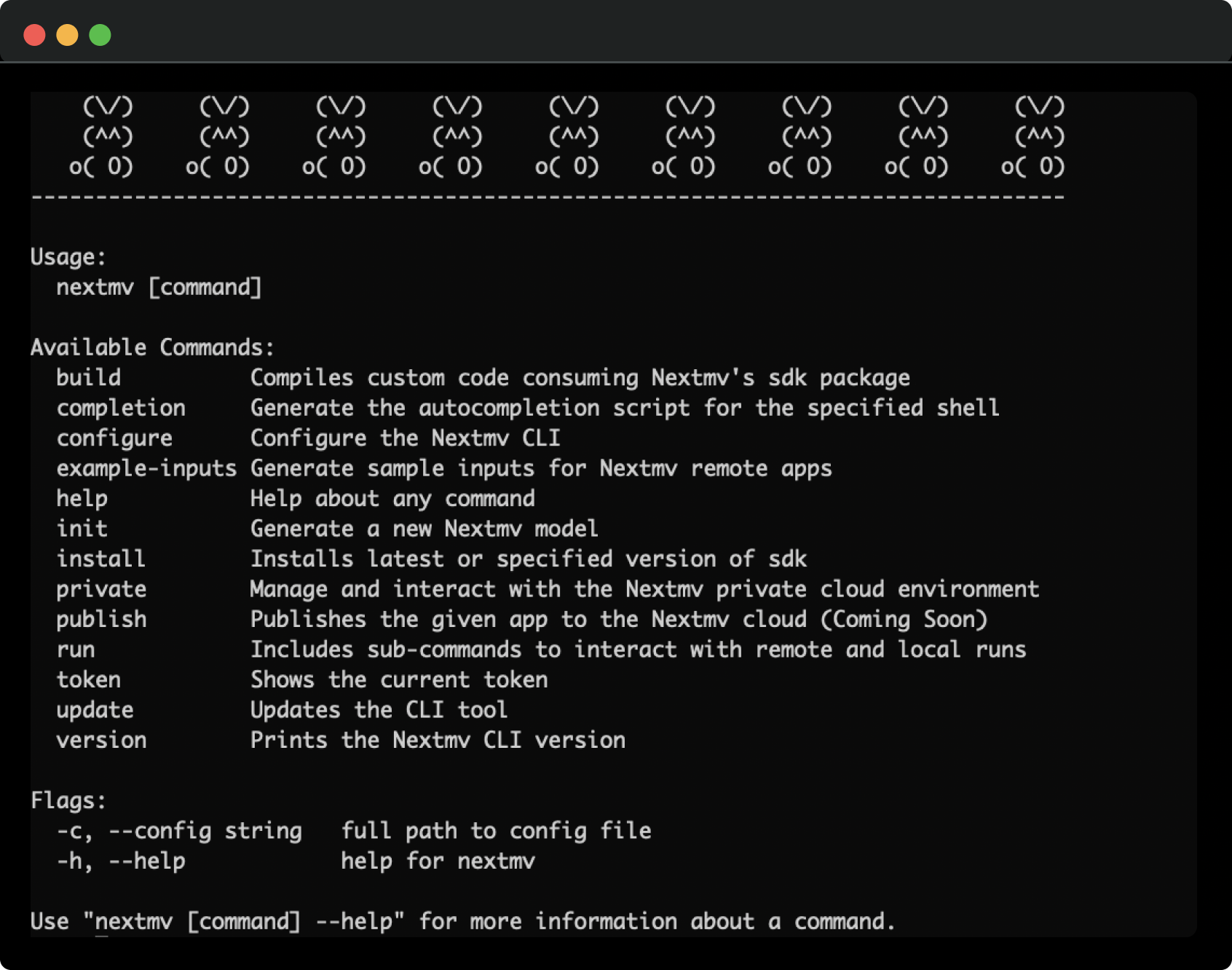We love decision optimization. The history, the math, the applications — all of it. But we haven't loved how the tooling often gets in the way of quickly arriving at really exciting and valuable outcomes: optimized decisions.
With Nextmv, we’re changing that by building a platform that makes it easier to build, test, deploy, and operate decision optimization services at speed and scale. Nextmv is a platform that looks and feels more like regular software and works better in modern technology stacks.
So we're happy to announce our latest release of the Nextmv platform, featuring the Nextmv CLI and SDK. In minutes, you can start running and customizing decision models for common use cases, or create something completely new using our flexible decision modeling framework — and you can do it all using familiar software development paradigms.
Taken together, this release makes it possible for businesses and teams to optimize more of their operations using their existing resources. If you’d like to see Nextmv in action, get started with a free trial and join us for a live techtalk and Q&A with our team.
Let's take a quick tour of the highlights.
CLI-guided decision workflows
Sometimes the hardest part of optimizing decisions is simply knowing where to start and what to do next. Many of us have experienced the maze of twisty passages. At Nextmv, we’ve long felt that decision optimization needed a workflow management interface. So we built one.
The Nextmv command line interface (CLI) provides a guided workflow for decision optimization. It allows you to focus your efforts on the art of modeling rather than finding and assembling all the infrastructure you need to get up and running.
We believe another key benefit is standardization. This release of the Nextmv CLI lays the groundwork for decision optimization consistency across teams and models — from file structures to model structures, testing structures, and beyond. Whether you’re an operator, operations researcher, analyst, or developer, everyone has a common experience for working with and collaborating on optimizing operational decisions.
We know teams who have tried building a CLI with an opinionated workflow that ties into their infrastructure. We’ve been the teams who have fought our way to the finish line without one. It’s tooling that we wanted for ourselves to create more models. It helps us move faster — so why not give the same experience to our users? No more repetitive copy-paste from API docs, no more searching for a library that might work for what you're trying to do, no more acquiring the right license to build and fiddle with decision models locally.
With a few simple commands in the Nextmv CLI, you have everything you need to start building and running decision models. From there, you've got a menu of commands to guide you to your next move. The Nextmv CLI is how we are investing in an opinionated way to create all the configuration for you to create, manage, test, and maintain decision optimization as a service.

Pre-built decision models that just work
With Nextmv, you can quickly initialize and run pre-built decision models. We call them templates. This release includes templates for vehicle routing, shift scheduling, packing, and Sudoku. But, like we said, the Nextmv CLI makes it faster for us to build too, so there are more templates on the way.
Each template offers everything you need for a pre-configured "it just works" experience: a sample input JSON, defined input/output schema, value function, constraints, and logic for generating and assessing plans.
With templates, you can pick a good starting point and focus on adding and representing your unique business logic to ultimately get to what you want: a working model that you can understand, modify, run, and view the results.
Each template is customizable to account for your problem logic and objectives. Need to balance your delivery routes across your vehicle fleet? Or have a special business constraint you need to account for? No problem. Code it up and run. Want to try it out yourself? Check out this walkthrough for a custom vehicle routing problem.
Custom decision modeling with less cognitive overhead
Our optimization selves love polytopes, positive semidefinite cones, and quasi-Newton methods, but we know they're not for everyone. That's why we believe in working with decisions as code.
Our platform's origins were founded using state-based search and built on novel decision diagram techniques. This provides a few advantages when it comes to creating custom decision models. First, state machines are broadly familiar to developers. Second, if optimization is about generating many possible plans and then searching for the best one, state-based modeling makes it easier to represent, observe, and understand those plans. Third, this approach allows users to think about building a search space (or decision model) more like an operator rather than a mathematician. Fourth, there’s less translation required to go from business logic to mathematical representation and back.

With this approach, there are fewer cognitive moving pieces to manage and it resets the barrier to entry for decision optimization. There’s more to come on this topic and using other solving paradigms with Nextmv future posts!
This is just the beginning
Enough talk. Try it out by creating an account and starting a free trial. Spin up a pre-built decision model and then start customizing and creating. Then tell us what you think — what you like, what could be improved, what we should add, what you tried — in our community forum or by sending us a message.
We’re thrilled to share this release with you. And there are a lot of people to thank for making this happen, especially our team of decision engineers, our customers, and our beta testers. There’s certainly more ground to cover, but we’re excited about this latest step to transform the end-to-end decision optimization experience. Here’s to some exciting next moves.











